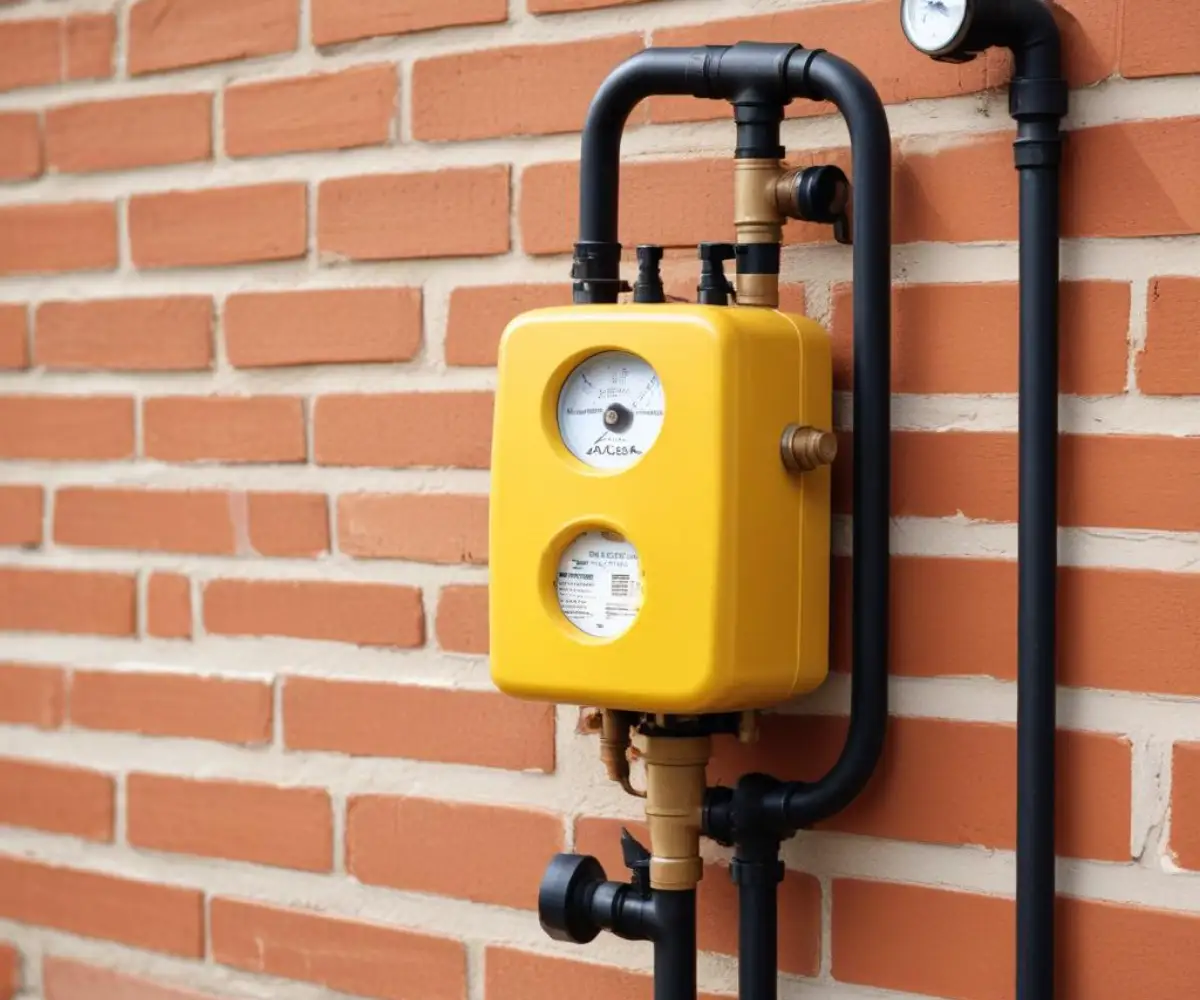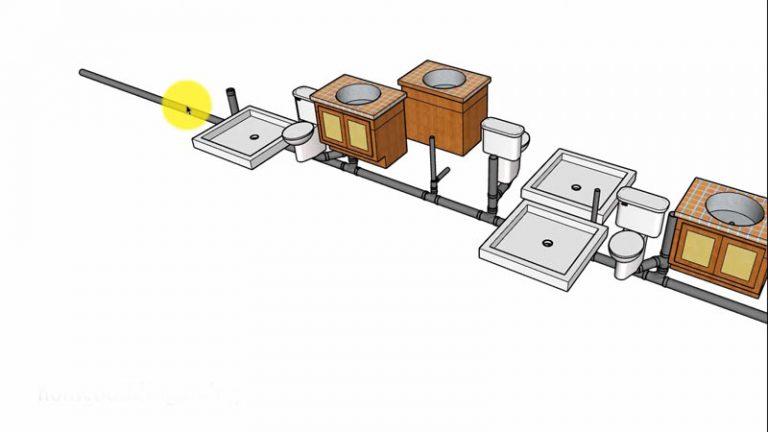Gas Shut Off? Why Turning It Back On Yourself Is Illegal & Deadly
Your heat is off, the water is cold, and the stove won’t light. You check the gas meter outside and see the valve is in the “off” position. It looks so simple, just a small lever. The temptation to just turn it back on yourself can be overwhelming, especially when you need to get your home running again.
However, taking that seemingly simple action is one of the most dangerous and misguided decisions a homeowner can make. Not only is it illegal in virtually every jurisdiction, but it also puts your property, your family, and even your neighbors at catastrophic risk. This isn’t a simple DIY fix; it’s a gamble with potentially fatal consequences.
This guide will explore the severe legal penalties, the life-threatening dangers, and the only correct procedure for safely restoring your natural gas service. Understanding the “why” behind the rules is the first step in protecting yourself from a preventable disaster.
You'll Learn About
The Legal Consequences: More Than Just a Fine
The laws and regulations prohibiting unauthorized gas reconnection are not in place to inconvenience you. They are critical public safety measures established to prevent explosions, fires, and fatalities. When you tamper with a gas meter, you are breaking the law and violating the terms of your agreement with the utility provider, opening yourself up to severe penalties.
Engaging in this act is a serious offense with consequences that extend far beyond a simple warning. The legal and financial fallout can be devastating.
Fines and Potential Criminal Charges
Tampering with utility equipment is a crime. If caught, you will face significant fines that can range from hundreds to thousands of dollars. The exact amount depends on local and state laws, but it will always be far more expensive than the standard reconnection fee charged by the utility company.
In cases where your actions lead to property damage, injury, or death, the charges can escalate to criminal offenses like reckless endangerment or even manslaughter. The legal system takes the endangerment of public safety extremely seriously, and the consequences reflect that.
Breach of Your Utility Service Agreement
When you sign up for gas service, you enter into a legal contract with the utility company. This agreement explicitly states that only authorized personnel are permitted to service or operate the company’s equipment, including the meter and shut-off valve. By turning the gas back on yourself, you are in direct breach of this contract.
The utility company has the right to refuse future service, charge you for any damages to their equipment, and require a costly, comprehensive inspection of your home’s entire gas system before they even consider reinstatement. These additional costs and hurdles can be immense.
Insurance and Devastating Liability
This is a critical point many people overlook. If you illegally restore your gas service and an incident occurs—such as a fire or an explosion—your homeowner’s insurance policy will almost certainly be voided. Insurance companies will not cover damages resulting from illegal activities.
This means you would be held personally and financially liable for all damages. This includes the cost of rebuilding your own home, your neighbors’ homes, and covering any medical expenses or wrongful death claims. The financial ruin from such an event is a life-altering catastrophe.
The Silent Dangers: Why Tampering with Gas Is a Deadly Gamble
The legal risks are significant, but they pale in comparison to the immediate physical dangers. Natural gas is a powerful and volatile fuel that demands respect and professional handling. A single mistake during reconnection can lead to a chain of events that ends in tragedy.
Professionals are trained to manage these risks through specific procedures and specialized equipment that you simply do not have. Attempting to bypass this expertise is a direct invitation for disaster.

The Unseen Threat of Gas Leaks
When a utility technician restores service, they don’t just turn a valve. They perform a critical “pressure test” to ensure there are no leaks in the system. When you turn the valve yourself, you have no way of knowing if a leak exists somewhere in the line, either inside or outside your house.
Even a small, slow leak can fill a confined space like a basement or wall cavity with an explosive concentration of natural gas. Since natural gas is colorless and the odorant (mercaptan) can sometimes be missed or fade, you may not even be aware of the danger until it is far too late.
The Catastrophic Risk of Explosion
Natural gas is only explosive when it mixes with air in a specific concentration, typically between 5% and 15%. This is known as the “lower explosive limit” and “upper explosive limit.” If a leak has occurred, it is very easy for the gas level in a room to reach this deadly range.
Once this mixture is present, any ignition source can trigger a violent explosion. We are not talking about a small flame; a tiny spark from a light switch, a refrigerator compressor kicking on, or even static electricity from walking across a carpet can be enough to ignite the gas, leveling your home in an instant.
Carbon Monoxide: The Invisible Poison
An often-overlooked danger of improper gas reconnection is carbon monoxide (CO) poisoning. When a technician restores service, they also check and relight the pilot lights on your appliances, such as your furnace, water heater, and stove. They ensure the flame is burning correctly.
If you turn the gas on without properly relighting and checking these appliances, or if the sudden influx of pressure damages a regulator, it can lead to incomplete combustion. This process creates carbon monoxide, a colorless, odorless gas that can kill you in your sleep. It is a silent and insidious threat that professionals are trained to prevent.
Common Reasons for Gas Disconnection
Understanding why your gas was shut off in the first place is key to understanding the correct path to reconnection. The reason for the shut-off dictates the necessary steps and inspections required for safe restoration. Each scenario has a specific protocol designed to ensure safety.
The utility company doesn’t shut off service without a valid reason. Each of these reasons carries its own set of risks if you attempt a DIY reconnection.
Non-Payment of Bills
This is the most frequent reason for a service disconnection. While it may be frustrating, the solution is purely administrative. Tampering with the meter will only add hefty fines and fees to your existing balance, making the financial problem worse.
The only solution is to contact the utility company, arrange payment, and schedule an authorized technician to come and legally restore your service. They will perform the necessary safety checks upon reconnection.
Suspected Leak or Emergency Shut-Off
If the gas company shut off your service because a leak was detected in your area or on your property, this is a critical safety measure. Under no circumstances should you attempt to turn it back on. Doing so could directly cause the explosion the utility company was trying to prevent.
A professional must first locate and repair the leak. Only after the system has been certified as safe can service be restored by an authorized technician.
Appliance Installation or Repair
Plumbers or HVAC technicians often need to shut off the gas at the meter to safely install or repair an appliance like a new furnace, water heater, or stove. While the technician who shut it off should be the one to turn it back on, sometimes homeowners get impatient.
You must allow the professional to complete their work. They need to properly connect the new appliance and then perform their own tests to ensure there are no leaks at the connection points before reactivating the system.
Change of Occupancy or Vacant Property
It is standard procedure for utility companies to shut off gas service when a tenant moves out or a property becomes vacant. This prevents gas from flowing into a home with appliances that may have been disconnected improperly or where pilot lights are not being monitored.
When moving into a new home, you must establish an account in your name and schedule a technician to come and officially turn on the service. They will perform a safety walkthrough and ensure all appliances are ready for operation.
The Only Safe and Legal Method to Restore Your Gas Service
There is no shortcut or clever workaround when it comes to gas service. The process is straightforward, regulated, and designed entirely around your safety. Following these steps is the only way to ensure your home is safe and your service is legally restored.
Any deviation from this process introduces unacceptable risks. The solution is simple: let the professionals do their job.
Step 1: Contact Your Utility Provider
Your very first and only action should be to call the phone number on your gas bill or the utility company’s main customer service line. Explain the situation and follow their instructions precisely. They will guide you on the next steps based on why the service was disconnected.
Do not attempt any physical action at the meter. Your responsibility begins and ends with this phone call.
Step 2: Resolve the Underlying Issue
Before the utility company will send a technician, you must resolve the reason for the shut-off. This means paying your outstanding bill, having a certified professional repair a known leak, or completing the installation of a new appliance.
Once the root cause is addressed, the utility company will be able to schedule your reconnection appointment.
Step 3: Schedule and Attend the Professional Reconnection
The utility company will give you a window of time when a technician will arrive. An adult must be present at the home, as the technician will need access to all gas-powered appliances to relight pilot lights and ensure they are functioning safely.
The technician will perform a pressure test, visually inspect the meter and accessible pipes, and ensure everything is in proper working order before they leave. This service is your guarantee of safety.
| Feature | DIY Attempt (Illegal) | Professional Service (Legal) |
|---|---|---|
| Legality | Illegal; can result in fines and criminal charges. | Fully legal and compliant with all regulations. |
| Safety Checks | None. Leaks go undetected. | Mandatory pressure tests and leak checks are performed. |
| Appliance Safety | Pilot lights are not professionally relit or checked. | Technician safely relights and checks all appliances. |
| Risk of Explosion | Extremely high due to potential undetected leaks. | Minimized through professional safety procedures. |
| Insurance Coverage | Voids homeowner’s insurance in case of an incident. | Maintains full validity of your insurance policy. |
| Long-Term Cost | Potentially catastrophic financial liability. | A standard, predictable reconnection fee. |
| Peace of Mind | None. Constant risk of a hidden danger. | Complete confidence in the safety of your home. |
Beyond the Meter: Hidden Dangers in Your Home’s Gas System
Many homeowners mistakenly believe the gas meter is the only critical component. In reality, it’s just the gateway to a complex network of pipes, valves, and connectors that run throughout your house. Tampering with the meter can create a domino effect of problems within this hidden system.
The integrity of this entire system is paramount, and a sudden, uncontrolled restoration of pressure can expose its weakest points with disastrous results.
Aging Pipes and Fittings in Older Homes
The charm of an older house often comes with hidden vulnerabilities. For those considering buying a house built in the 1800s or even the early 1900s, the gas piping can be a major concern. Older iron pipes can become brittle over time, and joint compounds can dry out and fail.
Forcibly turning a stuck valve at the meter can send a shockwave through this fragile system, causing a crack or breaking a seal in a pipe hidden deep within a wall or crawlspace. This creates a dangerous leak far from the meter itself, which you would have no way of detecting.
The Domino Effect of System Damage
A home’s systems are often interconnected. A seemingly unrelated issue can compromise your gas lines. For example, if you notice a sinking toilet, it could be a sign of a subfloor or foundation problem. That same shifting that is causing the toilet to sink could be putting immense stress on the rigid gas pipes running through the floor joists.
Similarly, a catastrophic event like a flood can have lasting effects. If you’ve had to deal with a washer and dryer in a flooded basement, the floodwaters could have corroded the gas lines and safety valves on your furnace and water heater. Restoring gas flow to this damaged equipment without a thorough professional inspection is exceptionally hazardous.
Frequently Asked Questions (FAQs)
Navigating a gas service interruption can be stressful, and it’s natural to have questions. Here are answers to some of the most common queries homeowners have about this critical issue.
Getting clear, correct information is vital to making safe decisions for you and your family.
Can my landlord turn off my gas?
Landlords generally cannot shut off essential utilities like gas or water as a way to evict a tenant or force payment. This is often considered a “constructive eviction” and is illegal in most areas. However, they can request a shut-off for emergency repairs, in which case they must provide reasonable notice.
If your landlord has shut off your gas without a valid safety reason, you should contact your local housing authority or seek legal advice.
What should I do if I smell gas?
If you ever smell the “rotten egg” scent of natural gas, you must act immediately. Do not turn any lights on or off, do not use your phone, and do not operate any appliances. Any of these actions could create a spark.
Immediately evacuate everyone from the building. From a safe distance—at least 300 feet away—call 911 and your gas utility’s emergency number. Do not re-enter the building for any reason until it has been declared safe by emergency personnel.
How much does it cost to have gas turned back on?
The cost varies by utility company and region, but a standard reconnection fee is typically between $50 and $150. This fee covers the cost of sending a trained technician to your home to perform the job safely.
While this may seem like an inconvenience, it is a small price to pay for the assurance that your home’s gas system is operating safely and legally. The potential cost of an illegal, DIY attempt is infinitely higher.
Conclusion: Prioritize Safety Above All Else
The conclusion is clear and absolute: it is both illegal and profoundly dangerous to turn your gas back on yourself. The risks of catastrophic explosion, deadly carbon monoxide poisoning, and complete financial ruin far outweigh any perceived benefit of saving a small amount of time or a modest reconnection fee.
Your gas meter and the entire fuel delivery system are parts of a powerful infrastructure that requires professional expertise. Always call the professionals. By contacting your utility company and allowing a trained technician to handle the reconnection, you are making the only responsible choice—one that protects your property, your finances, and the lives of your loved ones.


